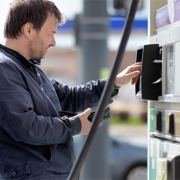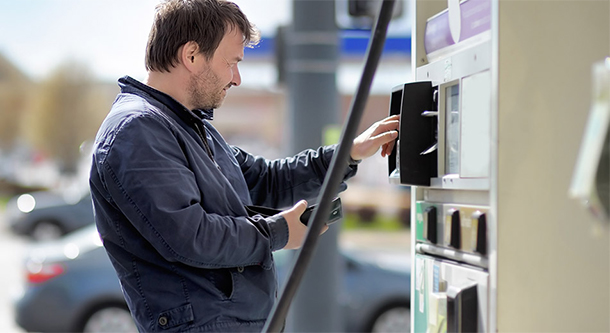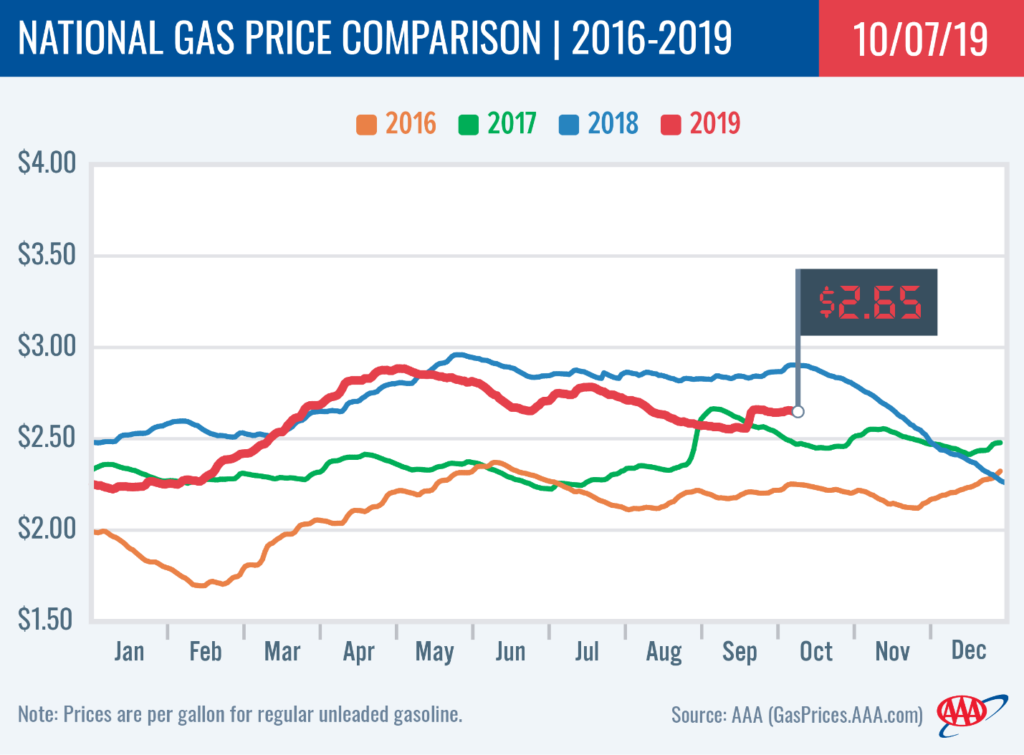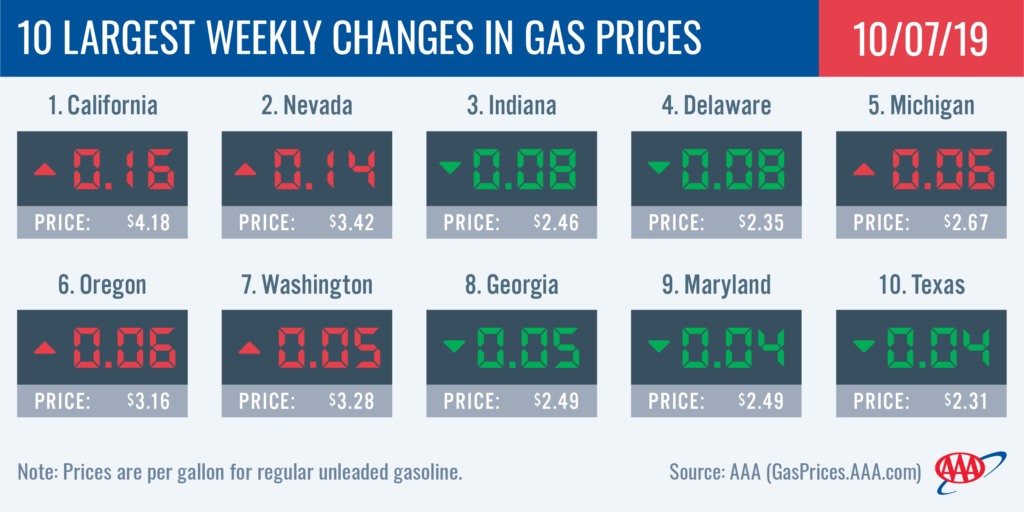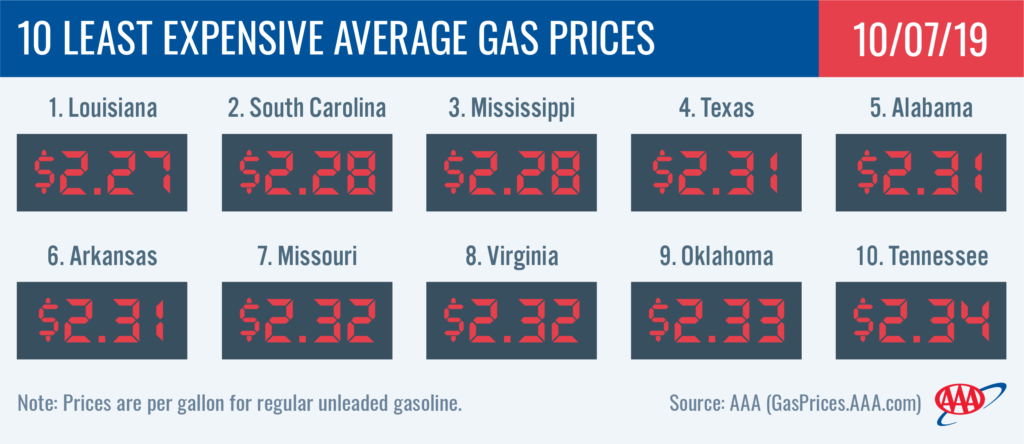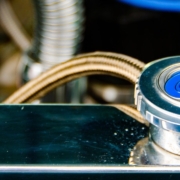 On the week, the national gas price average held steady at $2.56, but motorists can expect some volatility at the pump in the coming days and weeks. Over the weekend, Saudi Arabia experienced drone attacks on two major oil facilities – including the world’s largest, Abqaiq. The attacks have taken 5.7 million (crude) barrels per day off the market, accounting for about 6% of the global supply.
On the week, the national gas price average held steady at $2.56, but motorists can expect some volatility at the pump in the coming days and weeks. Over the weekend, Saudi Arabia experienced drone attacks on two major oil facilities – including the world’s largest, Abqaiq. The attacks have taken 5.7 million (crude) barrels per day off the market, accounting for about 6% of the global supply.
Prior to the attacks, global crude oil supply was very healthy, in fact sitting on a global glut of stocks. Regardless, initial market reaction to the attacks spiked crude oil prices. At the start of the work week, crude oil (West Texas Intermediate, WTI) is trading for $5/bbl more than on Friday’s closing, up to $61/bbl – a price point for crude not seen since May.
“Americans can expect local pump prices to start to increase this week. The jump could end up being as much as a quarter per gallon throughout this month,” said Jeanette Casselano, AAA spokesperson. “Whether this is a short or long term trend will be determined by the price of crude oil prices and how quickly the facilities in Saudi Arabia can recover and get back online.”
Damage to the facilities is still being accessed, but there is no word if it will be days, weeks or even months before infrastructure is repaired. To ease concerns, President Trump said he has authorized the release of crude from the Strategic Petroleum Reserve. Other Saudi-oil-consuming countries also have emergency reserves to help back-fill the global loss, if needed.
Notably, the U.S. currently depends less on crude imports from Saudi Arabia. The latest Energy Information Administration (EIA) report showed that the U.S. imported the least amount of crude oil from Saudi this decade. In the first half of this year, on average the U.S. imported about 18,000 bbl compared to 35,600 bbl in the first half of 2017.
While U.S. gasoline stock levels have been decreasing the past few weeks, total domestic stocks sit at 228 million bbl, which is ahead of the five-year average for this time of year by several million bbl. Today’s national gas price average is 7 cents cheaper than last month and 28 cents cheaper than this time last year. But these gaps are likely to shrink as the market adjusts to the news and crude oil prices increase.
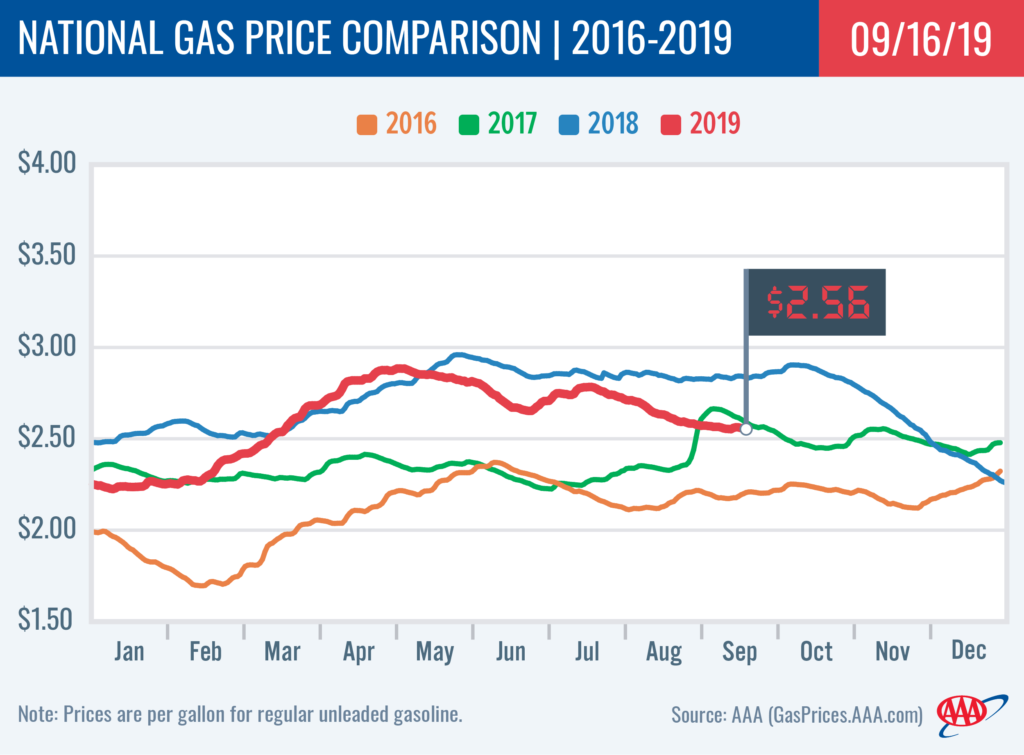
Quick Stats
- The nation’s top 10 largest weekly changes are: Ohio (+13 cents), Michigan (-9 cents), Delaware (+9 cents), Illinois (+6 cents), New Mexico (+5 cents), Georgia (+4 cents), Colorado (+4 cents), Utah (-3 cents), Oklahoma (+3 cents) and Louisiana (+3 cents).
- The nation’s top 10 least expensive markets are: Mississippi ($2.18), Louisiana ($2.20), Alabama ($2.22), South Carolina ($2.22), Arkansas ($2.24), Texas ($2.26), Tennessee ($2.27), Oklahoma ($2.28), Virginia ($2.28) and Missouri ($2.29).
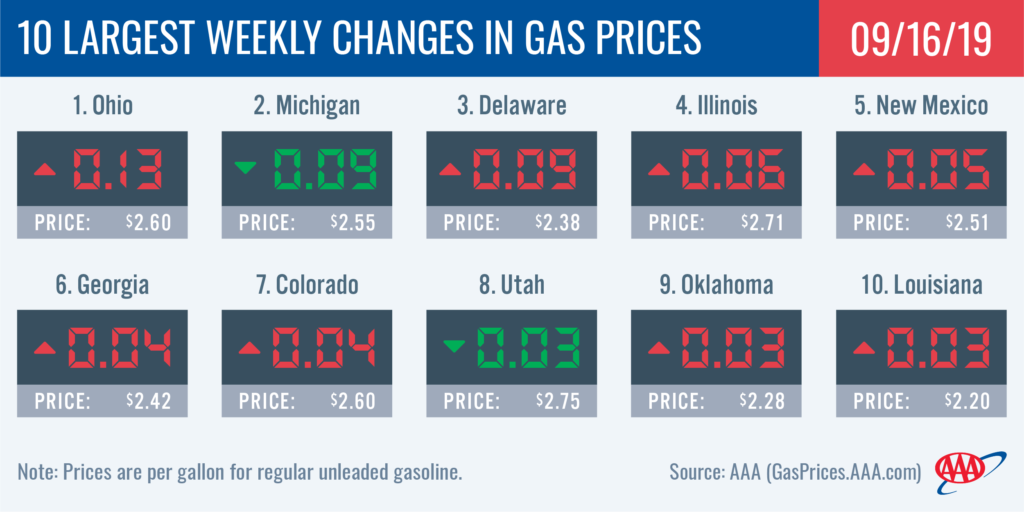
South and Southeast
On the week, motorists in the South and Southeast are seeing volatility, though it is not overly drastic. New Mexico (+5 cents), Georgia (+4 cents), Oklahoma (+3 cents) and Louisiana (+3 cents) rank among the top 10 states with the largest weekly changes. A total of six states saw prices increase between two to five cents since last Monday, while the remaining states saw prices decrease by a few pennies. State averages range from $2.18 to $2.42.
Part of the pump price increases for the six states can be attributed to gasoline stocks, which decreased for a second week. The latest draw was 1.1 million bbl, dropping total levels to 76 million bbl, which is the lowest stock level seen since the end of 2017, according to EIA data. Stocks are likely to continue to decline given the weekend news of the Saudi attack. Falling stocks paired with a likely increase in crude oil prices will likely lead to more expensive gas prices for the region.
Great Lakes and Central States
Pump prices range from as much as 13 cents more expensive to nine cents cheaper in the region on the week. Ohio (+13 cents) and Michigan (-9 cents) saw the biggest weekly changes in the region and the country. Gas prices are noticeably more expensive in Illinois (+6 cents), while Kansas (+2 cents), Missouri (+1 cent), Indiana (+1 cent), Kentucky (+1 cent) and Nebraska are more expensive but just by a couple of pennies.
Gasoline stocks built by a significant 1.6 million bbl in EIA’s latest report. That increases total stocks for the Great Lakes and Central States to 53 million bbl, which is on par with levels this time last year. Regional refinery utilization remains strong at 100%, which should ultimately lead to cheaper gas prices for the region. However, any major jumps in crude oil prices may reverse this trend and lead to more expensive gas prices nationally and in the region.
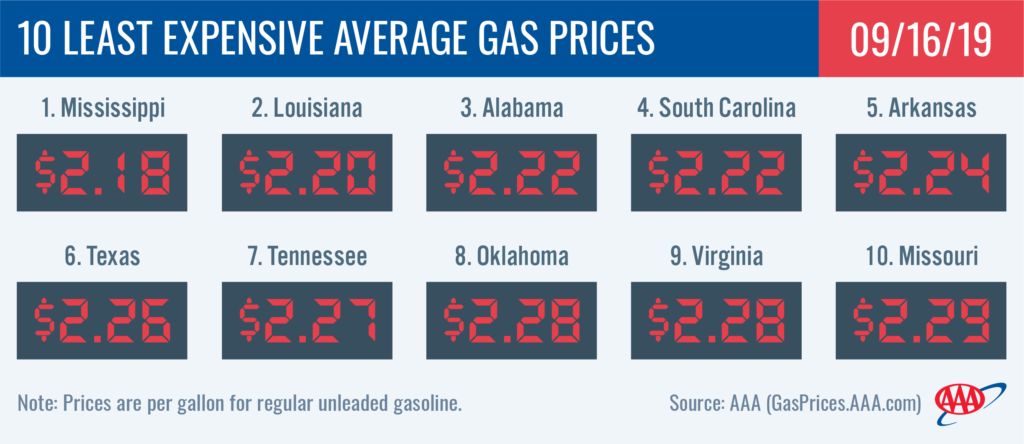
Mid-Atlantic and Northeast
The majority of the Mid-Atlantic and Northeast states have gas prices that are cheaper or stable compared to last week. Only four states saw upward movement at the pump this week: Delaware (+9 cents), Maryland (+3 cents), Tennessee (+2 cents) and Pennsylvania (+1 cent). With a three cent decrease, Connecticut ($2.68) saw the largest change in pump prices. At the start of the week, New York ($2.72) has the most expensive average of all states in the region and ranks as the 10th most expensive in the country.
Gasoline stocks drew down by a significant 1.4 million bbl, dropping levels to 63.6 million bbl. Stocks in the region have mostly been building as of late, though slowly since July. This is the largest draw seen during this timeframe and measures at a 3.1 million bbl deficit compared to this time last year. It is likely more states will see fluctuation in the week ahead, especially as crude oil increases.
Rockies
Colorado (+3 cents) was the only state in the region to see an increase at the pump this week. Utah (-3 cents) saw the largest decrease followed by Wyoming (-2 cents), Idaho (-1 cent) and Montana (-1 cent). The Rockies region is averaging pump prices at $2.70/gallon.
The region’s stock dropped by 100,000 bbl to measure at 7.4 million bbl in EIA’s latest report. In addition, regional refinery utilization fell from 102% down to 94% signaling that stocks are positioned to further decrease and likely push regional gas prices more expensive.
West Coast
Pump prices in the West Coast region are the highest in the nation, with all states in the region landing on the top 10 most expensive list today. Hawaii ($3.64) and California ($3.63) are the most expensive markets in the country. Washington ($3.18), Nevada ($3.10), Oregon ($3.03), Alaska ($2.95) and Arizona ($2.83) follow. All state averages in the region have marginally decreased on the week. Hawaii, Washington, Nevada and Oregon saw the largest decreases at a penny each.
The EIA’s recent report for the week ending on September 9, showed that total West Coast motor gasoline stocks climbed by 300,000 bbl to 28.7 million bbl. The increase is a reversal from the previous four-week period that saw total stockpiles decrease by about 3.5 million bbl. The stock growth will likely help pump prices continue to decline as motorists in the region enter the lower demand fall driving season this week. However, as with the rest of the nation, increasing crude oil prices are likely to reverse this trend.
Oil market dynamics
At the close of Friday’s formal trading session on the NYMEX, WTI decreased by 24 cents to settle at $54.85, but on Monday, the price was up to $61/bbl.
Overall, oil prices were mixed. Early in the week, oil prices fell after reports emerged that the Trump Administration is considering relaxing sanctions on Iran, which would put more oil into an already oversupplied market. However, the losses were tempered by EIA’s weekly report showing that total domestic crude inventories fell by 6.9 million bbl last week. They now sit at 416.1 million bbl, which is nearly 20 million bbl higher than were they were at this same time last year. For this week, crude prices will see increases due to increased tension in the Middle East – specifically stemming from the attacks in Saudi Arabia – and could be bolstered by increased optimism that China and the U.S., the world’s two largest crude consumers, may be nearing a resolution to the trade war.
Motorists can find current gas prices along their route with the free AAA Mobile app for iPhone, iPad and Android. The app can also be used to map a route, find discounts, book a hotel and access AAA roadside assistance. Learn more at AAA.com/mobile.







